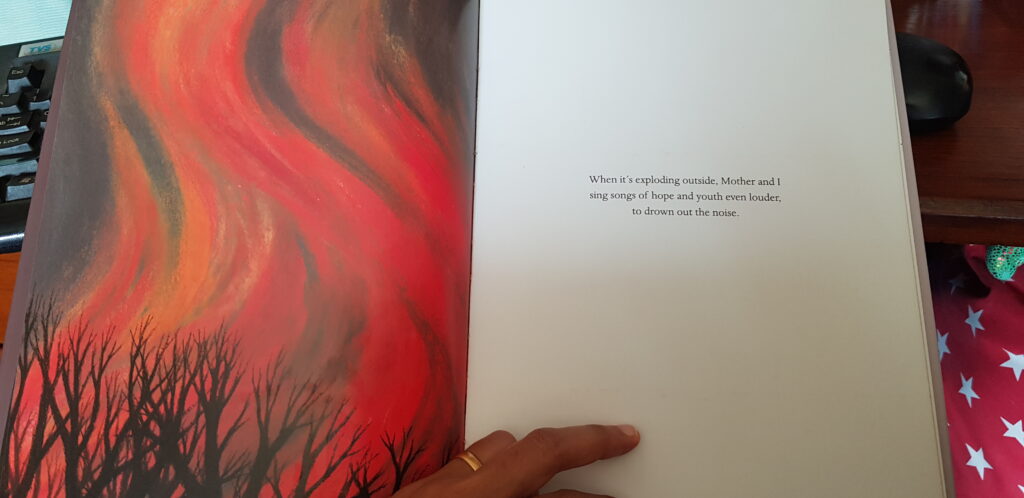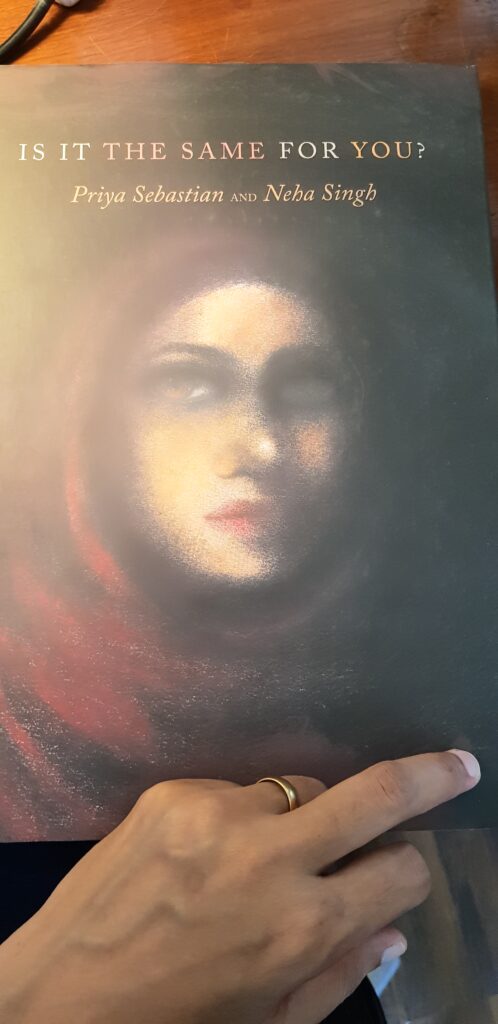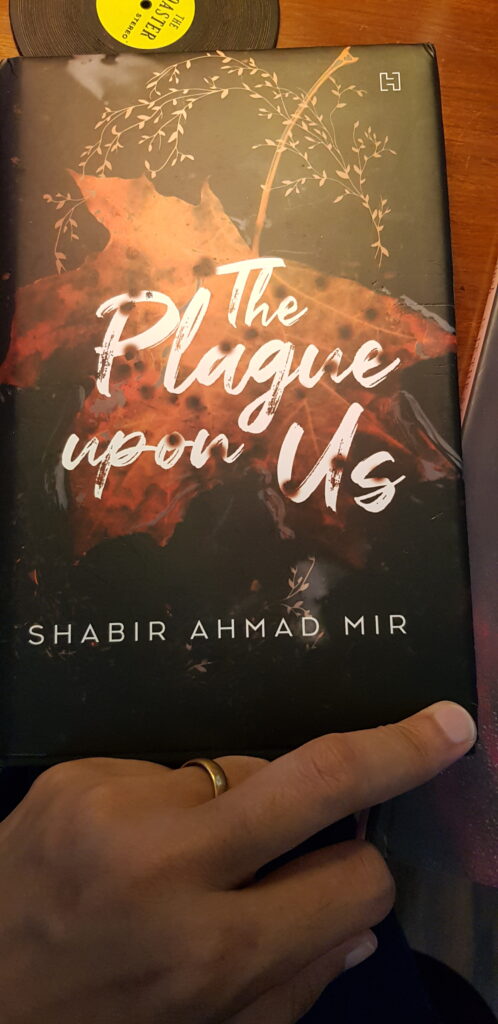Two books on Kashmir
Is it the same for you? by Neha Singh and illustrated by Priya Sebastian ( Seagull Books) is a large format picture book telling the story of a young girl in Kashmir as she goes through the turbulence of adolescence in her conflict-ridden world. It is an astonishingly powerful book. The story from the title onwards forces the reader to align themselves with the young girl narrator. It forces the reader to understand the horrors of living under conflict-like situation 24×7. The barbed wire detail illustration on the same page when the narrator speaks of the humiliating frisking of one’s person at the police posts that are conducted, sometimes at random, for the sake of safety is a very disturbing design detail. The barbed wire evokes images of the fencing that is seen in large parts of Kashmir, in rural and urban spaces. Most of the barbed wire fences have empty bottles and cans strung on it so as to alert locals in case someone tries to cross the fences under the cover of darkness. To juxtapose this detail with that of the body search bordering on sexual harassment of the helpless girl who as a local in the face of authority can do little except be mute. This is a powerful moment in the story as it exemplifies not only her state but at a broader level it is emblematic of the challenges faced by other citizens of Kashmir. Yet, given these trying circumstances, the girl-narrator tries to seek hope.

The illustrations accompanying the story are fantastic! It is extraordinary what can be done with different tones of brown and black. Is it the same for you? is a powerful book at many levels but definitely because it asks the readers the haunting question whether they share similar experiences as the protagonist. A question that is not easily answered and instead leaves much room for introspection. Even though it is illustrated like a picture book usually created for little children, this is more like a book that develops the principles of a picture book of showing a complicated reality to a new reader. A child coming into the world has to be introduced to the world and its various elements. Similarly the world needs to reckon with the difficult circumstances under which Kashmiris live and perhaps do something about bringing some positive changes.
The Plague Upon Us is Shabir Ahmad Mir’s debut novel ( Hachette India) set in Kashmir and is also about living constantly under conflict. It was published on the first anniversary of the revoking of Article 370 that gave the state of Kashmir a special status in India. The book is told in four tales each focusing on the lives of four main characters – Obaid, Jozy, Rabia and Muzzafar. It has all the classic details of torture, army abductions, wronged youth running away to join militants, rape scenes, festering anger, the noise of chatter, the conversations and the simplistic way of linking informers and security forces does not sit easy. This novel capitulates to all the popular impressions of what constitutes Kashmir. It seems like commercial fiction dressed up as literary fiction and put through production in haste to mark one year lockdown of the state.
The writer has potential. There are parts in it that can be lifted out of the ordinary but there is no gravitas. So many missed opportunities of detailing the ordinary folks who become victims in the crossfire of security forces and militants; the extortion rackets, the wrongful imprisonment of young men, the informer network, the impact on women, the families that are torn apart etc. It also lacks descriptions of Kashmir. The beauty and the devastation. It is so focussed on the conversations that really lead nowhere.
In this day and age when there is ready access to war literature, testimonies, information in real time on social media, documentaries and live television, etc. Literary works such as The Plague Upon Us that are positioned as a retelling of Oedipus Rex could do with much more layering. To invoke Classical Literature, then it must be used correctly. Not flippantly. Talking about militancy and the troubles of Kashmir does not make it a Greek tragedy. There is justifiably a lot of raw rage on display. A rage that burns within the writer. While rage is good, it is raw energy that could easily have been used to some creative good. It is also impossible to tell the difference between the characters. Their voices are flat. There is no rhythm in the text. Isn’t the idea of literary fiction to focus on the events, use them and present them in a little more than journalistic writing?
Both the books reviewed here are stories from Kashmir, detailing the horror that the civilians experience daily. But it is the minimalist picture book with its powerful stories and use of few words that has a greater impact than the novel.
4 October 2020



No Comments